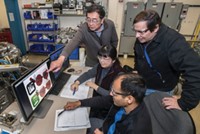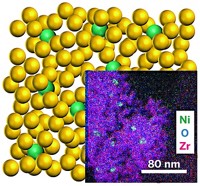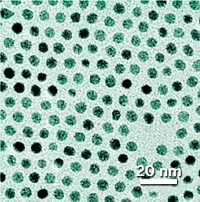Advertisement
Grab your lab coat. Let's get started
Welcome!
Welcome!
Create an account below to get 6 C&EN articles per month, receive newsletters and more - all free.
It seems this is your first time logging in online. Please enter the following information to continue.
As an ACS member you automatically get access to this site. All we need is few more details to create your reading experience.
Not you? Sign in with a different account.
Not you? Sign in with a different account.
ERROR 1
ERROR 1
ERROR 2
ERROR 2
ERROR 2
ERROR 2
ERROR 2
Password and Confirm password must match.
If you have an ACS member number, please enter it here so we can link this account to your membership. (optional)
ERROR 2
ACS values your privacy. By submitting your information, you are gaining access to C&EN and subscribing to our weekly newsletter. We use the information you provide to make your reading experience better, and we will never sell your data to third party members.
Analytical Chemistry
Catalyst In A Bottle Works Better
Trapping metal particles inside nanotubes alters physical and chemical properties
by Mitch Jacoby
July 10, 2008

Confining metallic nanoparticles inside carbon nanotubes alters the redox properties of the particles and can enhance their effectiveness as catalysts, according to a new study (J. Am. Chem. Soc., DOI: 10.1021/ja8008192). The investigation highlights a novel procedure for tailoring electronic properties of nanoparticles and may lead to various applications in catalysis, gas sensing, and magnetic devices.
"Carbon nanotubes are similar in some ways to activated carbon, used commercially as a catalyst support, yet they have electronic properties that make them a better support material for some types of reactions. Researchers are particularly interested in the effect of catalyst confinement achieved by attaching particles to interior nanotube surfaces, which differ electronically from nanotube exteriors. Most preparation methods, however, place the particles on the outer surfaces.
Now, Xinhe Bao, Xiulian Pan, Wei Chen, and Zhongli Fan at Dalian Institute of Chemical Physics, in China, have shown that a solution-phase method aided by ultrasonication selectively deposits iron oxide nanoparticles inside carbon nanotubes. These particles are precursors for catalyst used in Fischer-Tropsch (FT) synthesis, a carbon-coupling method for making synthetic fuels from mixtures of CO and hydrogen.
The team finds that confined particles are more prone to chemical reduction than particles attached to the exterior of the nanotubes. Specifically, they report that reduction of the particles with hydrogen and CO, which converts the precursors to the working form of the catalyst, doubles the ratio of iron-carbide/iron-oxide surface species on catalyst particles inside a nanotube compared with particles on the outside. A high relative concentration of iron carbide species is believed to be essential for high FT activity.
In FT synthesis tests, the team monitored the concentration of five-carbon and larger hydrocarbons. They found that, compared with exterior particles and particles supported on activated carbon, nanotube-confined FT catalyst particles produced twice and six times the yield, respectively.
Concerned initially about diffusion limitation problems, the Dalian team developed methods for cutting the tubes into short segments to minimize the distance that reactant and product molecules would need to travel to get in and out of the nanotubes. Judging by the enhanced reducibility of the confined particles, however, Bao notes that diffusion is not a severe impediment. The group now plans to conduct diffusion simulation studies.
"This is exciting work," comments Charles H. F. (Chuck) Peden, a senior scientist at Pacific Northwest National Laboratory. Clearly, there are dramatic differences in the chemical and physical properties of the catalyst particles when they are put inside or outside the nanotube channels, he says.





Join the conversation
Contact the reporter
Submit a Letter to the Editor for publication
Engage with us on Twitter